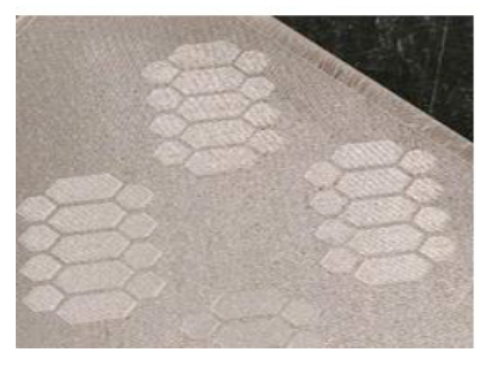In ‘Exploring Convergence of Snake-Skin-Inspired Texture Designs and Additive Manufacturing for Mechanical Traction,’ US researchers outline their findings in a study where they made an interesting choice for experimenting with 3D printing materials. Studying snake-skin scales from the Python regius species, the authors translated the hexagonal scale patterns to laser-powder bed fusion (L-PBF) manufacturing technique on 420 stainless steel.
As the researchers point out, nature offers a ‘vast database of robust designs’ for scientists to work from in creating many different forms and structures. Taking inspiration from evolution, today we can glean details from plants and animals that have survived due to strength and resilience.
“Reptiles such as snakes are of particular interest for studying efficient locomotion, as they navigate effectively in harsh surroundings without legs, arms, ears, or other appendages,” state the researchers. “The efficient locomotion of snakes across multiple terrains is attributed to the unique hierarchical arrangement of features on their scales.”
Translating such textures to steel is an ambitious endeavor, but the team persevered in studying the movement of larger snakes and what ultimately becomes a ‘walking’ pattern as their skin ‘manages friction’ for high performance in mechanical traction.
“Since the ventral scales of a snake are in constant contact with surfaces and are used in manipulation of locomotion, it was decided to study, and 3D print the ventral scale textures,” stated the researchers.
For those who are not that familiar with snakes, it may be surprising to find out that every one of them has a different ‘profile’ and arrangement of patterns, leaving the researchers to examine many different shapes, patterns, distributions, and positioning of fibrils. The researchers also discovered that the microscale directional textures they were able to produce with L-PBF printing exhibited an ‘inherent’ likeness to the snakeskin—offering promise regarding applications like mechanical systems—and especially those requiring mechanical traction. The design was comprised of five hexagons located centrally and then four smaller hexagons on each side.
For this study, the team was interested in assessing the viability of 3D printing for making the designs, comparing surface roughness and the quality of frictional performance. No post-processing was included for the 3D prints, meaning that the micro-texture was created during the movement of fabrication. The research team found this discovery to be ‘noteworthy and distinguishing’ since such surface roughness is desirable.
“The frictional anisotropic behavior of 3D printed stainless steel surfaces demonstrated clear ability of printed texture to manipulate physical traction through the management of coefficient of friction with respect to the orientation of relative motion,” conclude the researchers. “Further optimization of the process control variables (to control the above discussed surface roughness parameters) along with frictional tests for multiple texture patterns will be focus of future research.”
This certainly is not the first time researchers have taken a cue from nature in regards to 3D printing, with many different designs inspiring everything from fashion to electrically conductive parts to materials like liquid polymers. What do you think of this news? Let us know your thoughts! Join the discussion of this and other 3D printing topics at 3DPrintBoard.com.
[Source / Images: ‘Exploring Convergence of Snake-Skin-Inspired Texture Designs and Additive Manufacturing for Mechanical Traction’]Subscribe to Our Email Newsletter
Stay up-to-date on all the latest news from the 3D printing industry and receive information and offers from third party vendors.
You May Also Like
3D Printing News Briefs, April 13, 2024: Robotics, Orthotics, & Hypersonics
In 3D Printing News Briefs today, we’re focusing first on robotics, as Carnegie Mellon University’s new Robotics Innovation Center will house several community outreach programs, and Ugogo3D is now working...
Rail Giant Alstom Saves $15M with 3D Printing Automation Software 3D Spark
3D Spark has entered into a three-year deal with the rail giant Alstom. Alstom, a transport behemoth with annual revenues of $16 billion, specializes in the manufacture of trains, trams,...
Meltio Expands Global Reach with New Partnerships in the Americas and Europe
Spanish 3D printing manufacturer Meltio has expanded its sales network across the globe. With the addition of three new partners in the United States, Brazil, Argentina, and Italy, Meltio aims...
3D Printing Webinar and Event Roundup: April 7, 2024
Webinars and events in the 3D printing industry are picking back up this week! Sea-Air-Space is coming to Maryland, and SAE International is sponsoring a 3D Systems webinar about 3D...



































